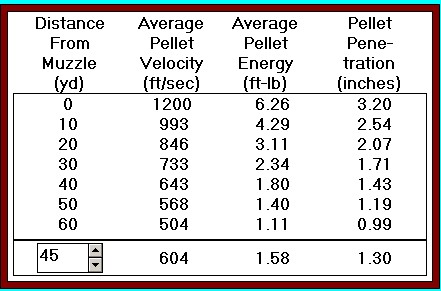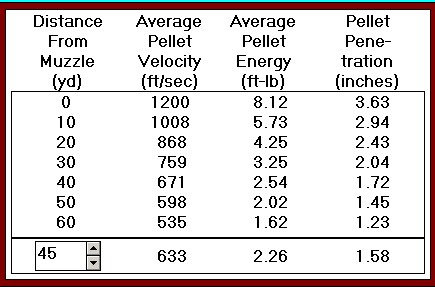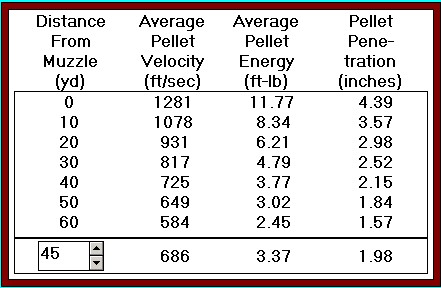


Shotgun Power: the Myth of the Gauge
Often, as applied to wingshooting, one gauge or another will be touted as being "more powerful," a longer range gauge, or perhaps having "more knockdown." Gauge debates are more than a bit silly when looking at the matter from an objective viewpoint; the viewpoint being physics. Yet, it still persists, no matter how shrill the plea might be.
A 1200 fps pellet has the same range, the same external ballistics, and the same ability to penetrate regardless of the platform it is launched from. There is no tangible difference in a single pellet whether the "gauge" is a 28 gauge or a 10 gauge: there cannot be, if you believe in physics. "Knockdown" is a subjective term; one that has no particular meaning.
It takes only one pellet to kill a game bird if that pellet is in the right place. Naturally, if we could all completely control that one projectile on unpredictable game birds, .22 shorts and pellets guns would be popular pheasant-smackers. We can't, so we need a decent pattern to insure clean harvests and recovered birds. A generous pattern is perhaps a better way to characterize it.
Aside from aesthetics, novelty, and personal preferences-- the primary reason for a choice of gauge is simply payload. No matter what the shotgun, patterns may vary in density from shot to shot from 5 - 10 percent - far more than any mythical gauge prowess can give us. Pro chokemakers hardly shoot just a few rounds to characterize a pattern. Ten shots is better than five, twenty shot far better than ten. An ounce of #6 lead shot approximates 225 pellets. To find that 5% deviation in a 30 inch circle at 40 yards just 12 pellets either way more than qualifies: it is so very easy to find that.
If three quarters of an ounce provides a pattern for us of sufficient size and density to give us the effective pattern we seek at a given range-the pricey 28 gauge shotshell may be adequate. It is truly Fool's Folly to believe that a 28 ga. will automatically produce a better three-quarter of an ounce pattern than a 20 gauge. It doesn't happen, it can't happen-- and if a 28 gauge could perform better than a 20 gauge, it would be incredibly silly to have it as an "official skeet class" where the shots seldom exceed 22 yards or so. Perhaps someone should explain to the NSSA what this crazy class is all about?
Powder has improved, wad materials have improved, and the limitations of a bore size from a century ago have become subtle if not intangible. From an external ballistics standpoint, and an effective pattern size standpoint: the reason to use a larger bore scattergun is merely the ability to use a heavier payload of shot. Today's more progressive-burning powders allow this, where years ago it was not practical.
Gauge worship, like caliber worship in centerfire rifles, can become a bit silly-- if not downright laughable. Lower your shot charge, you reduce the size of your effective pattern in concert. It works that way at close range on the skeet field when a one chip break counts as a dead bird at twenty yards, and it works that way when a game bird at 45 yards is where we center our properly populated pattern. Patterns thin out with range, and the only way we can get more effective range is to add more shot: of the proper size. I see far too many runners and cripples every year: too often, it is not shooter error at all. The culprit is often poor patterns and inadequate shot charges, not the shooter-- except that had the shooter patterned his gun, those deficiencies would have become evident.
Shell availability and shotshell selection factors in as well. As you likely imagine, both 20 and 12 gauge have the widest selection of loads, with 16 gauge far more available than you might think at comparable pricing.
The theory that a gauge alone indicates tangibly more "power" is wishful thinking. An ounce of shot can never be more than an ounce of shot no matter what we do. Quality chokes and quality shells have far, far more to do with pattern quality than a comparison of that ounce of shot out of a 12, 20, or 16 gauge barrel alone. Reduce it to three quarters of an ounce and we have just lost 25% of our effective pattern potential, regardless of gauge.
When it comes to lethality, there is no substitute for penetration.
Let's start with #7-1/2 shot, including penetration into ballistic gelatin:

Here is a peek at #6 shot ballistics, from E. D. Lowry data:

A look at #5 shot:

Finally, a look at #4 lead shot ballistics:

As you can see, no matter what you do with 7-1/2 shot, it cannot begin to equal #5 shot. No matter what you do with #6, you cannot approach downrange performance of #4 shot.
As for gauge, if you have no need for any payloads heavier than 1-1/4 oz., either a three inch chambered 20 ga. or a 16 gauge is more than adequate.
For heavier payloads, 1-3/8 oz. to 1-3/4 oz. or more, or for the more bulky steel shot loads-12 gauge is the logical choice.
It is all a compromise and your patterning board alone can show you what you have to work with. Consider field chokes: in theory, an Improved Cylinder choke yields a 50% pattern at 40 yards, and a "Full" choke equally as theoretically gives you a 70% pattern at 40 yards in the same 30 inch circle. What would you rather have, 50% of three quarters of an ounce, or three quarters of fully twice that? The 1-1/2 oz. 2-3/4 in. 12 ga. "Baby Magnum" load is exactly that; twice the number of pellets and twice the pattern density with the same choke performance. You can expect fully double the performance going from a soft-shot promo 12 ga. target load to a nickel-plated, heavy payload quality shell. It moots any gauge discussions in a big hurry.
The best that can be hoped for, according to industry theory is 20% additional pattern density from that IC choke to a FULL choke. Phrased differently, that is a 40% tighter pattern. With just a shell change, same choke, you may get a 100% improvement in pattern.
As for gauges, I love them all contingent on application. In fact, of the sweetest little guns I've ever fired was a 24 gauge, not often seen in this country. Firing 11/16 oz. of #8 shot at 1280 fps, what a great little short-range Over / Under it was. Please don't ask if it was built on a "true 24 gauge frame" or not; I have no earthly idea.
In the end, the shotgun that fits you the best is likely the one you will do the best with. Whether you shoot 1-1/8 oz. out of a 20, 16, or 12 gauge . . . nothing can live on the difference. The tangible differences, the only differences worth talking about go right back to what we can see on our patterning boards. It is quality shells and quality chokes that have made the only differences that I can see. If we can't see it, then it is an extremely rare bird that can be affected by it.
It is patterns that do the work, and good patterns are wherever you find the. A dumb piece of resin board doesn't know the gauge that produced the pattern on it.
Copyright 2006 by Randy Wakeman. All Rights Reserved.

Custom Search




